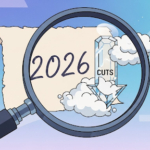Valuation Risk Rises: Is the Market Overlooking Trouble?
Another week, another shock to the markets—this time courtesy of tariffs and policy uncertainty. Investors woke up to renewed fears as the S&P 500 faces valuation pressures, with Goldman Sachs warning that rising trade tensions could crimp earnings and squeeze profit margins.
The problem? Market optimism and high valuations have left little room for error. The S&P 500’s forward P/E multiple hovers around 22, well above historical norms, making it vulnerable to any negative surprises—like, say, a fresh round of tariffs. Goldman estimates that each 5% increase in U.S. tariffs could shave 1-2% off earnings per share, and if investors start pricing in prolonged policy risk, stocks could take a 5% hit to fair value.
This isn’t just about short-term market reactions—it’s about the broader implications for corporate profitability, economic growth, and investor sentiment. How will traders adjust? What can long-term investors do to stay ahead of the game?
Let’s dive in.
This Week I Learned…
How Policy Uncertainty Impacts Market Valuations
Investors like certainty—markets, even more so. When policy uncertainty rises, stock valuation multiples tend to contract. Why? Because uncertainty increases risk perception, leading investors to demand a higher equity risk premium.
The Economic Policy Uncertainty (EPU) Index, which tracks uncertainty based on news reports, has been flashing warning signs, hitting its highest percentile in 40 years. Historically, when policy uncertainty spikes, the S&P 500’s forward P/E multiple tends to decline by 3-5%.
But it’s not just about headlines—corporate decision-making takes a hit, too. Companies become more cautious, cutting back on investments and hiring, which can slow economic growth and dampen earnings expectations. The ripple effect? Lower investor confidence and more downside risk for stocks.
This week, we learned that valuation multiples aren’t just about earnings—they’re also about confidence. And right now, confidence is looking shaky.
The Fun Corner
Valuation Jokes: Because Markets Need a Laugh Too
Why did the P/E ratio break up with its stock?
Because it just wasn’t growing anymore.
Investors might not find earnings multiples funny, but markets sure do. The S&P 500 is trading above 22x forward earnings, yet history tells us that multiples tend to shrink when uncertainty rises. With trade wars looming, it might be time for a valuation reality check.
Remember: A high P/E multiple is like a New Year’s resolution—great in theory, but hard to sustain when reality sets in.
The S&P 500’s Valuation Problem: High Multiples, Higher Risks
For months, investors have pushed stocks higher, betting on strong earnings and economic resilience. But now, with tariffs and policy uncertainty entering the mix, those high valuations are starting to look fragile.
Goldman Sachs warns that the S&P 500’s earnings outlook could take a hit, with every 5% tariff hike shaving 1-2% off EPS. If investors begin pricing in longer-term policy risk, the market’s forward P/E multiple—currently around 22—could shrink by 3% or more.
There are two key ways this could play out:
1️⃣ Profit margins get squeezed – If companies absorb higher costs instead of passing them on to consumers, expect weaker earnings growth and lower stock prices.
2️⃣ Consumer spending slows – If businesses pass costs to customers, higher prices could dampen demand, creating a broader economic slowdown.
Either way, valuation compression looks likely—especially with the economic policy uncertainty index hitting a multi-decade high. Investors who have been comfortable with stretched multiples may need to rethink their strategies.
But not all is lost. Investors can prepare by focusing on fundamentals—companies with strong balance sheets, pricing power, and resilient cash flows. While volatility may spike, long-term discipline will be key in navigating the months ahead.
The Last Say
High Valuations, High Risk—Time to Adjust?
Markets have been in a high-risk, high-reward phase—driven by optimism, earnings growth, and a willingness to overlook policy uncertainties. But with tariffs back in the spotlight, investor confidence is facing a real test.
If history is any guide, valuation multiples tend to contract when uncertainty rises. The question is: Are we at the start of a longer-term reset, or is this just another short-term shock?
For investors, the key takeaway is not to chase valuations blindly. With policy risks rising and earnings expectations under pressure, it may be time to reassess portfolios, focus on quality assets, and be prepared for volatility.
While short-term traders may be reacting to the latest headlines, long-term investors know the real challenge: staying ahead of risks before they become obvious to the market.The bottom line? Markets don’t like surprises, and right now, uncertainty is the only certainty.





















